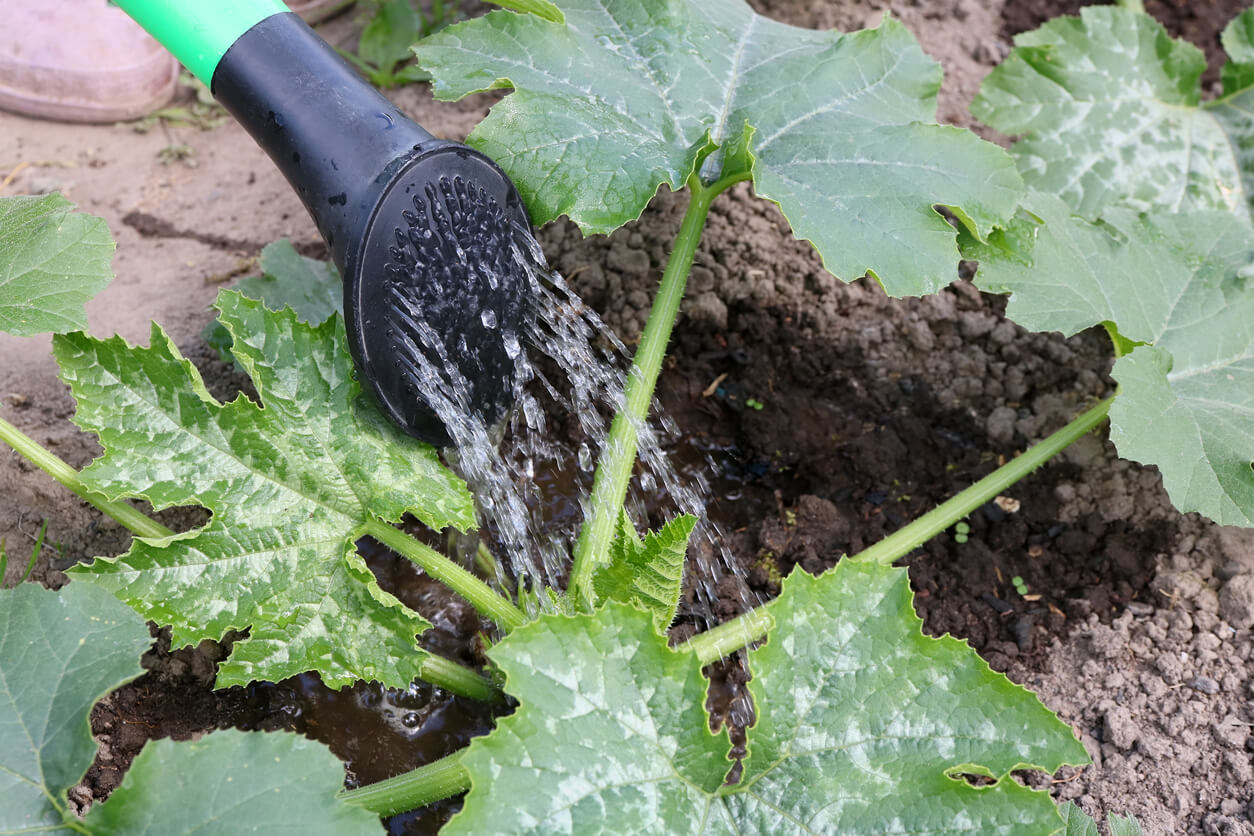
Watering Your Zucchini Plants
Caring for zucchini shares the same hydration dance many other squash varieties, making precise watering a cornerstone for your zucchini plant’s health. Achieving the perfect moisture balance is crucial, especially when cultivating zucchini in containers. Here’s your guide to mastering the art of watering for vibrant and flourishing zucchini.
To safeguard the well-being of your zucchini, water it when the top layer of soil feels dry to the touch. Plunge your finger about an inch deep into the soil, and you should consistently sense moisture. Inadequate watering can result in tough, discolored, and less aromatic foliage. In some instances, parched zucchini plants may exhibit droopy leaves as a visual signal, indicating their need for hydration.
When watering your zucchini, target the base of the plant, steering clear of contact with the leaves. Wetting the leaves may invite plant diseases and attract unwelcome pests to your precious zucchini.
A word of caution: Overwatering your zucchini can diminish oxygen supply to the plant, causing the leaves, especially those near the bottom, to turn yellow and droop. In severe cases, these affected leaves may even detach. Interestingly, this could be misinterpreted as a plea for more water when, in reality, the soil remains consistently wet. If you notice such symptoms, your zucchini might be receiving excessive water, or the container lacks proper drainage. Boosting the root zone with a 2-inch layer of compost can enhance drainage, provided you incorporate the compost into the soil without disturbing the roots. On the flip side, underwatering may lead to wilting and browning of leaf tips. Dry, brittle tips that snap upon bending signal your zucchini’s thirst.
How often do you water your zucchini plants, and have you encountered the challenges of overwatering or underwatering? Share your experiences and strategies for maintaining the ideal moisture balance for your zucchini plants. Let’s cultivate flourishing zucchini together!


 Previous
Previous

